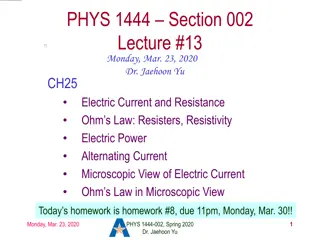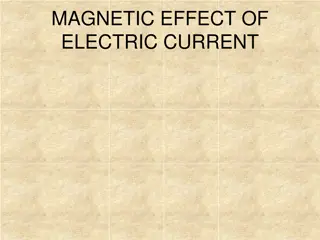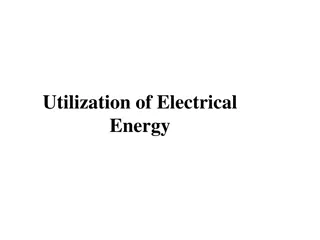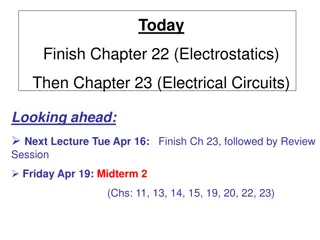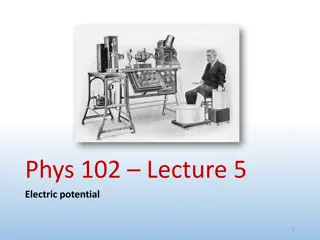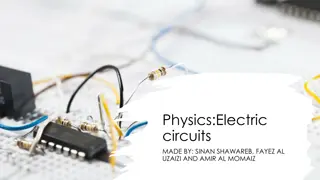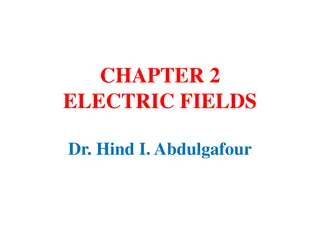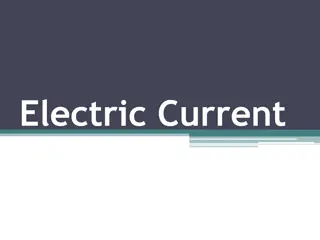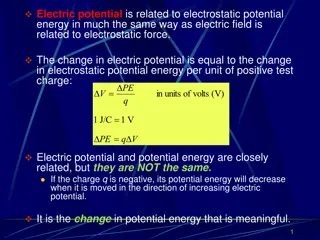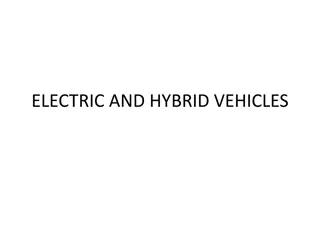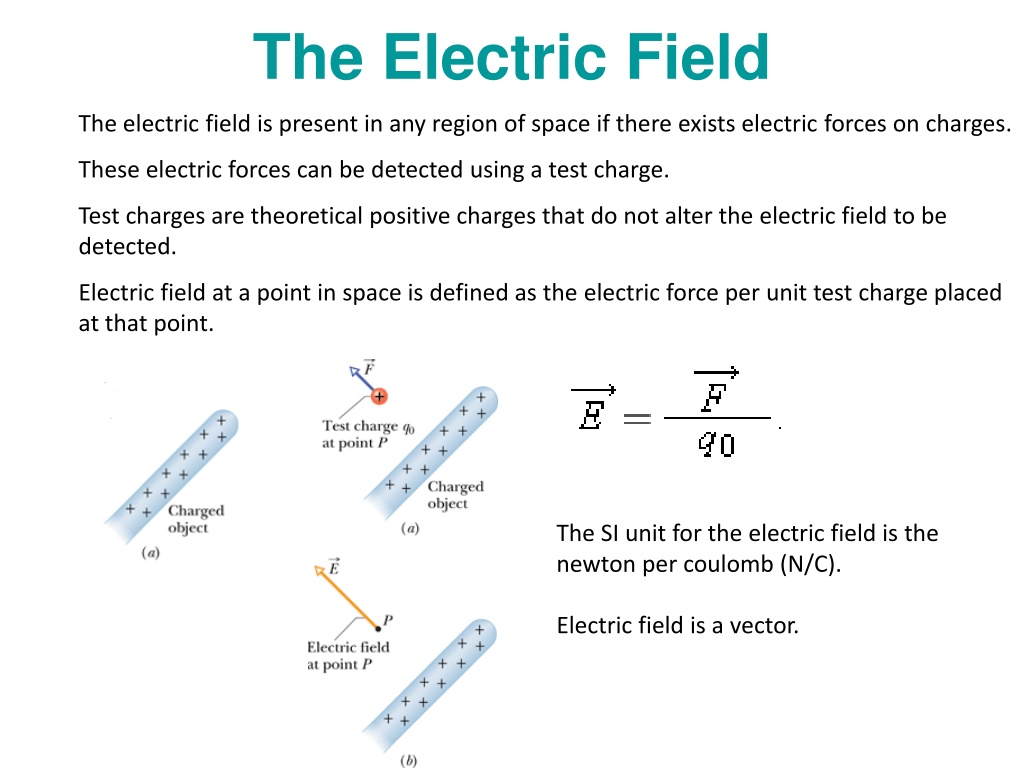
Understanding Electric Fields and Forces in Physics
The electric field is a fundamental concept in physics, characterized by electric forces on charges. Explore how test charges, vectors, and field lines play a role in understanding electric fields. Discover the effects of electric fields and how charges move within them. Dive into the calculations and applications of electric fields and forces in various scenarios like point charges, capacitors, and conductors.
Download Presentation

Please find below an Image/Link to download the presentation.
The content on the website is provided AS IS for your information and personal use only. It may not be sold, licensed, or shared on other websites without obtaining consent from the author. Download presentation by click this link. If you encounter any issues during the download, it is possible that the publisher has removed the file from their server.
E N D
Presentation Transcript
The Electric Field The electric field is present in any region of space if there exists electric forces on charges. These electric forces can be detected using a test charge. Test charges are theoretical positive charges that do not alter the electric field to be detected. Electric field at a point in space is defined as the electric force per unit test charge placed at that point. The SI unit for the electric field is the newton per coulomb (N/C). Electric field is a vector.
Electric Field Lines Positive point charge Negative point charge Dipole Two like charges Parallel plate Capacitor
Charge moving in an Electric Field [CJ10 P52, Chap 18] The right drawing shows an electron entering the lower left side of a parallel plate capacitor and exiting at the upper right side. The initial speed of the electron is 5.71 106 m/s. The capacitor is 2.00 cm long, and its plates are separated y 0.150 cm. a. When the capacitor plates are not charged, as in the left drawing, draw the subsequent motion of the electron, and determine how long the electron takes to cross the plates. b. Assume that the electric field between the plates is uniform everywhere in the right drawing, and find its magnitude.
The Electric Field of a Point Charge Qq F = . k 2 r F Q = = . E k 2 q r
P 45 Chap 18 Two charges are located on the x axis: q1 = +6.0 C at x1 = +4.0 cm, and q2 = +6.0 C at x2 = -4.0 cm. Two other charges are located on the y axis: q3 = +3.0 C at y3 = +5.0 cm, and q4 = -8 C at y4 = +7.0 cm. Find (a) the magnitude and (b) the direction of the net electric field at the origin.
18.8. The Electric Field Inside a Conductor: Shielding At electrostatic equilibrium: 1. Any excess charge resides on the surface. 2. The electric field is zero inside the conductor.
Conductor in Electric Field Under electrostatic equilibrium: 1. The conductor shields the electric field. 2. The electric field just outside the surface a conductor is perpendicular to the surface. Sensitive electronic circuits are often enclosed within metal boxes that provide shielding from external fields.
Electrostatic Precipitator (a) Schematic of an electrostatic precipitator. Air is passed through grids of opposite charge. The first grid charges airborne particles, while the second attracts and collects them. (b) The dramatic effect of electrostatic precipitators is seen by the absence of smoke from this power plant. (credit: Cmdalgleish, Wikimedia Commons)
Gauss' Law Gauss' Law: The electric flux, E through a Gaussian surface is equal to the net charge Q enclosed by the surface divided by, 0 the permittivity of free space:







